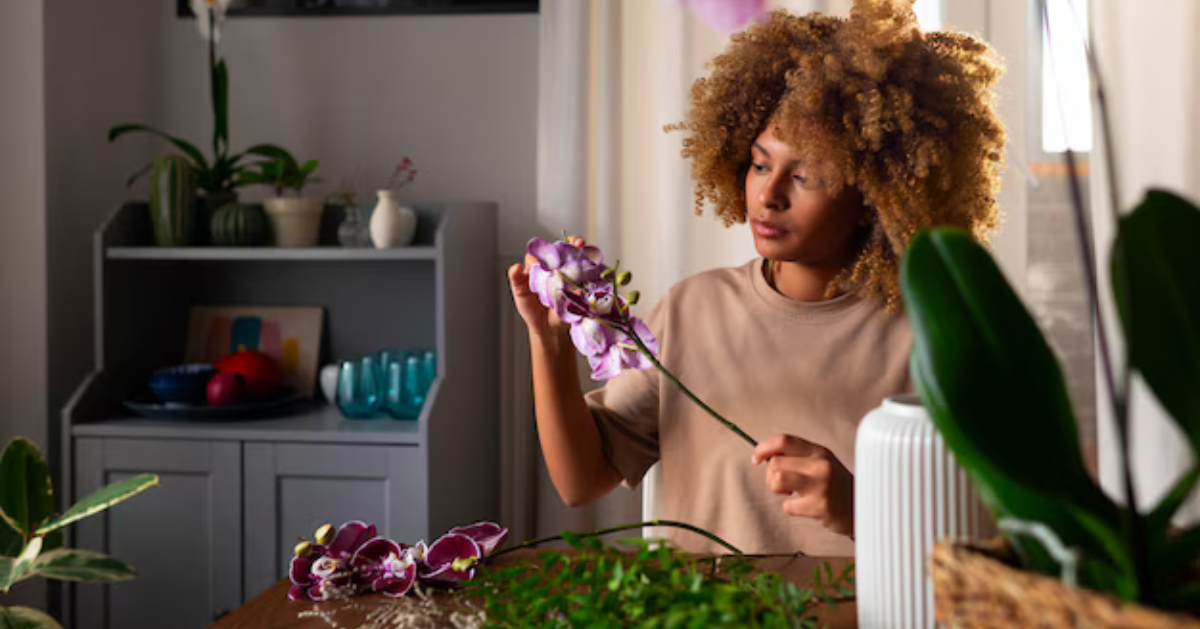Spathiphyllum, also known as Peace Lily, is a popular houseplant admired for its elegant white blooms and lush green foliage. Let’s dive into everything you need to know about this captivating plant.
What Is Spathiphyllum?
Spathiphyllum, commonly referred to as Peace Lily, belongs to the Araceae family. Native to tropical regions of the Americas and Southeast Asia, it is celebrated for its striking white flowers that resemble a sail, symbolizing peace and tranquility.
Why Spathiphyllum Is Popular
The Peace Lily isn’t just an eye-catcher; it’s a powerhouse of air purification. According to NASA’s Clean Air Study, it removes harmful toxins such as formaldehyde and benzene, making it an excellent indoor plant.
Ideal Growing Conditions
Spathiphyllum thrives in low to moderate light, making it perfect for indoor spaces with limited natural light. It also enjoys warm, humid conditions. Let’s break down its requirements:
Light Requirements
While Peace Lilies tolerate low light, bright, indirect sunlight encourages better growth and blooming. Direct sunlight can scorch their delicate leaves, so placing them near east-facing windows is ideal.
Watering Needs
Peace Lilies prefer moist soil but dislike waterlogged conditions. Water your plant when the top inch of soil feels dry to the touch. Overwatering can lead to root rot, a common issue for indoor plants.
Soil Preferences
The ideal soil for Spathiphyllum is well-draining, nutrient-rich potting mix. Adding perlite or sand can improve drainage, ensuring the roots stay healthy.
Humidity and Temperature
Peace Lilies flourish in temperatures between 65–85°F (18–29°C). Higher humidity levels mimic their natural environment, so consider misting the leaves or using a humidifier during dry seasons.
Fertilizing Spathiphyllum
A balanced, water-soluble fertilizer applied every 6–8 weeks during the growing season (spring and summer) keeps Peace Lilies thriving. Avoid over-fertilizing, as it can harm the roots.
Repotting Your Peace Lily
Spathiphyllum requires repotting every 1–2 years to accommodate its growing roots. Choose a pot that is one size larger and refresh the soil to ensure continuous growth.
Common Problems and Solutions
Despite being a low-maintenance plant, Peace Lilies can face some challenges. Here’s how to address them:
- Yellowing Leaves: Often a sign of overwatering or underwatering. Check the soil moisture and adjust accordingly.
- Brown Leaf Tips: Indicates low humidity or excessive fertilization. Increase humidity levels or flush the soil to remove fertilizer build-up.
- No Blooms: Insufficient light is the main culprit. Move your plant to a brighter location without direct sunlight.
Health Benefits of Spathiphyllum
Peace Lilies are not just decorative but also health-enhancing. They improve air quality by filtering pollutants, reduce mold spores, and increase overall indoor humidity, which is beneficial for respiratory health.
Is Spathiphyllum Toxic?
While beautiful, Peace Lilies are toxic to pets and humans if ingested. They contain calcium oxalate crystals, which can cause irritation and discomfort. Keep them out of reach of children and pets.
How to Propagate Spathiphyllum
Propagation is a simple way to multiply your Peace Lilies. The division method is most effective:
- Carefully remove the plant from its pot.
- Separate the roots into smaller sections with a few leaves.
- Replant the divisions in fresh soil and water thoroughly.
Decorating with Spathiphyllum
Peace Lilies add a touch of elegance to any room. Their striking appearance works well in offices, living rooms, or bedrooms. Pair them with modern pots to enhance their aesthetic appeal.
Seasonal Care Tips
- Spring and Summer: Focus on watering, fertilizing, and repotting if needed.
- Fall and Winter: Reduce watering frequency and stop fertilizing as the plant enters dormancy.
The Spiritual Significance of Peace Lilies
In addition to their physical beauty, Peace Lilies hold spiritual symbolism. They represent peace, healing, and hope, making them a popular gift for housewarmings, funerals, or as a gesture of goodwill.
Eco-Friendly Features of Spathiphyllum
Peace Lilies are sustainable choices for eco-conscious individuals. They require minimal resources to thrive and contribute positively to indoor ecosystems.
Tips for Beginners
If you’re new to houseplants, Peace Lilies are a perfect starting point. Their forgiving nature and resilience make them ideal for beginners. Just remember the golden rule: avoid overwatering!
Conclusion
Spathiphyllum, or Peace Lily, is more than just a plant. Its air-purifying qualities, ease of care, and aesthetic value make it a must-have for any indoor space. With the tips shared above, you can keep your Peace Lily flourishing and enjoy the serene beauty it brings.
FAQs
How often should I water my Peace Lily?
Water your Peace Lily once the top inch of soil feels dry, typically once a week.
Why are my Peace Lily’s leaves turning yellow?
Yellowing leaves can result from overwatering or underwatering. Check the soil moisture to adjust your watering routine.
Can Peace Lilies survive in low light?
Yes, Peace Lilies tolerate low light but prefer bright, indirect sunlight for optimal growth.
Are Peace Lilies toxic to pets?
Yes, they are toxic to pets if ingested. Keep them out of reach of curious animals.
How do I get my Peace Lily to bloom?
Ensure it receives sufficient indirect light, proper watering, and occasional fertilization to encourage blooming.

